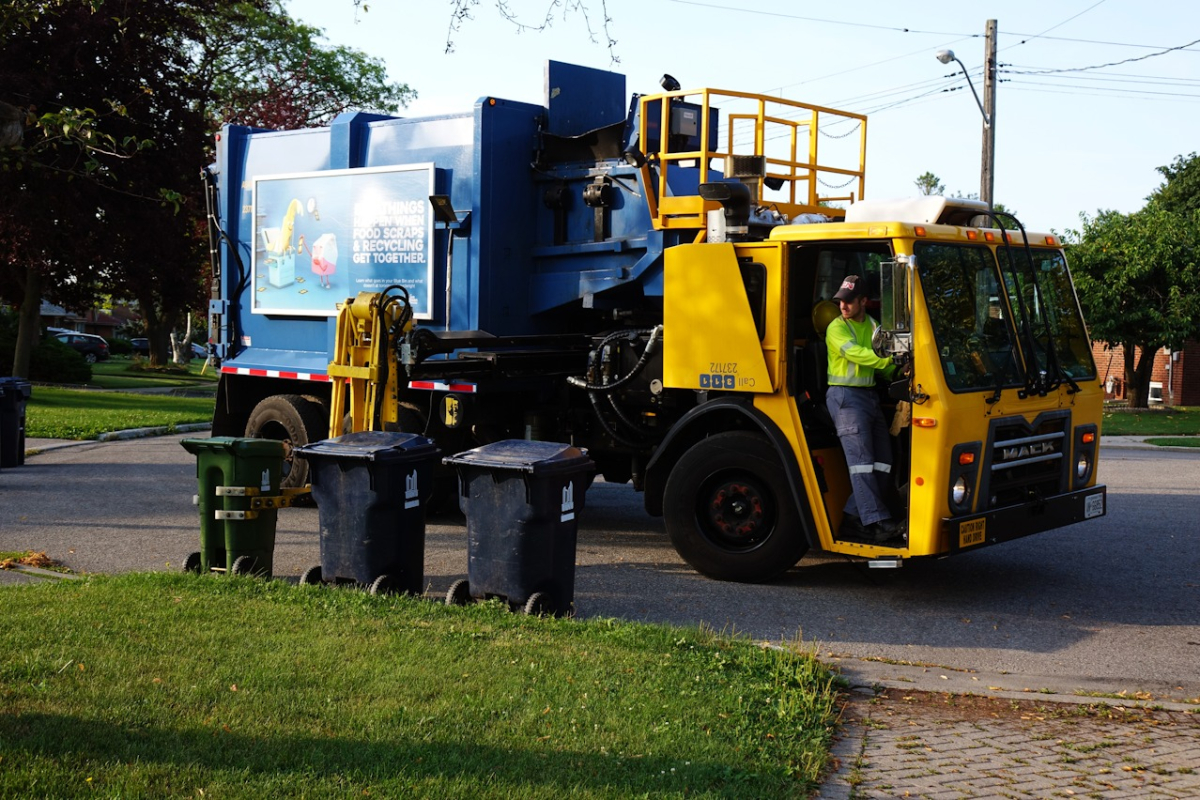Support strong Canadian climate journalism for 2025
Toronto has too much garbage and not enough places to put it.
As the fourth-largest city in North America, Toronto is home to more than three million people. The city disposes of approximately 450,000 tonnes of garbage per year at Green Lane landfill in Southwold, Ont., roughly 200 kilometres west of the city. And based on that amount of waste, Green Lane is expected to reach capacity by 2034-35.
In the search for a solution, the city has been considering incineration as a potential fix, much to the dismay of environmental groups concerned about the possible air pollution and health hazards associated with burning waste.
The groups have urged city council to look for alternate solutions. At a council meeting on June 14, they won a partial victory when councillors voted to postpone sending trash to incinerator facilities that generate energy from waste until more study on the environmental standards of existing facilities is done.
For now, the city will look for alternative landfill options and conduct public education campaigns to reduce the overall amount of trash.
Waste reduction efforts will include keeping organic waste out of the garbage stream, particularly in multi-residential buildings where recycling is not yet mandatory. The city will also design strategies to discourage single-use and takeaway packing in favour of reusable containers for food and look for ways to keep construction and demolition waste out of the landfill.
Emily J. Alfred, waste campaigner for Toronto Environmental Alliance, attended and spoke at the committee meeting that heard the item before it went to the city council meeting. She said the groups argued the city should focus on diverting and reducing waste and felt their message was heard.
Burning mixed garbage creates a mix of toxic air pollutants, Alfred said. “This includes pollutants such as particulate matter, sulphur dioxide and nitrogen oxides, and the burning of plastics and other combustible materials also creates very toxic dioxins and furans,” she added. “These are extremely toxic substances that accumulate in the soil and in our bodies. Even the most sophisticated filtration systems cannot remove all of these substances.”
As for the energy generated from waste facilities, the returns are minimal, Alfred noted.
“Incineration, even with energy recovery, is a very inefficient source of non-renewable energy: only a small amount of energy is collected by burning mixed garbage, and most of that energy comes from burning plastics, a fossil fuel product.”
At the meeting, council approved Toronto’s Residual Waste Management Work Plan, which outlines short- and medium-term plans to extend the lifespan of the city’s Green Lane landfill. The strategy will focus on upping the amount of reuse and recycling, as well as activities that promote resource conservation and reduce environmental impact.
The city will also negotiate more disposal agreements with other landfills in the Toronto region to redirect waste from Green Lane landfill.
Councillors have not entirely ruled out incineration at energy-from-waste facilities as a long-term option. However, they directed staff to study the location, age, technology and environmental compliance records of the companies before taking that step.
The council report stressed residents should be encouraged to reduce waste by following city recycling guidelines and other simple measures such as refusing receipts, extra napkins and cutlery unless necessary, and avoiding purchases of items wrapped in too much packaging. Residents should also be encouraged to use reusable shopping bags, coffee mugs, water bottles and other reusable items.
Currently, there are five incinerator centres in Canada: in Burnaby, B.C.; Quebec City; Charlottetown, P.E.I.; and two in Ontario, one in Durham Region and the other in Brampton. These incinerator centres should be closed because they burn a lot of garbage and create huge air quality problems, said Karen Wirsig, senior program manager of plastics at Environmental Defence.
“Once you invest in incineration, you need to keep feeding that beast. So, if you actually have a waste reduction strategy that you are serious about, the last thing you should do is spend a lot of money building an incinerator,” said Wirsig.
Wirsig said there is much the city can do to prevent waste with policies that support reuse, including introducing a requirement for restaurants to use reusable foodservice ware when guests are dining in, and supporting the expansion of reusables for takeout meals, beverages and groceries.
“Ensuring beverage containers are collected and reused or recycled, including through support for an expanded deposit-return system for all beverage containers, and ensuring organics are separated from residual waste and stay out of the landfill, including by reinvesting in public education and awareness,” said Wirsig.
This story was produced in partnership with Journalists for Human Rights for the Afghan Journalists-in-Residence program funded by the Meta Journalism Project.






Comments